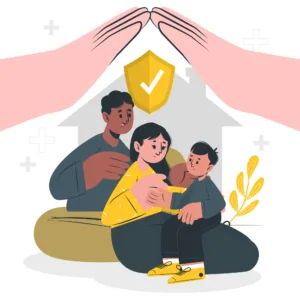When you purchase through links on our site, we may earn an affiliate commission. This doesn’t affect our editorial independence.
Modern parenting comes with digital challenges previous generations never faced. Kids navigate smartphones, tablets, and computers with frightening ease while parents scramble to keep up. Implementing the best tips for setting up parental control helps families create safer online environments without turning homes into digital prison camps.
Start Setting Up Parental Control With Router-Level Protection First
Home Wi-Fi routers offer the most comprehensive coverage for parental controls across every connected device. Access router settings through a web browser – usually by typing 192.168.1.1 or checking the sticker on the router itself. Most modern routers include built-in filtering options that block inappropriate websites automatically.
Time restrictions work wonders as tips for setting up parental control. Set specific hours when internet access shuts down completely – maybe 9 PM for younger kids or 11 PM for teenagers. Router-level controls affect gaming consoles, smart TVs, and every device that connects to home Wi-Fi, creating consistent rules throughout the house.
Device-Specific Controls That Actually Work for Parental Control

Windows PCs and Mac computers include family safety features that many parents overlook entirely. Microsoft Family Safety and Apple’s Screen Time sync across devices, so limits set on phones automatically apply to computers too. This prevents kids from simply switching devices when phone time runs out.
Content Filtering Strategies That Balance Safety and Freedom
Age-appropriate filtering requires more nuance than simply blocking everything potentially harmful. Common Sense Media provides excellent guidance on age-appropriate content across movies, games, and websites. Their ratings help parents make informed decisions rather than guessing what’s suitable.
Search engines offer safer alternatives specifically designed for children. Kiddle, KidzSearch, and YouTube Kids filter content automatically while still allowing educational research and entertainment. These platforms remove most concerning material without creating overly restrictive environments that frustrate curious minds. They also offer great tips for setting up parental control.
App and Game Management Without Constant Battles
Purchase approvals prevent surprise credit card charges while teaching kids about digital spending. Both Apple and Google allow parents to require approval for all downloads – free or paid. This creates natural conversation opportunities about appropriate apps rather than discovering problematic content after installation.
Social media platforms pose unique challenges that require ongoing attention. Instagram, TikTok, and Snapchat include privacy settings that limit stranger contact, but these require manual configuration. Spend time exploring each platform with kids, explaining privacy risks while adjusting settings together.
Communication Tools That Build Trust
Monitoring should enhance family communication rather than replace it entirely. Bark analyzes messages and social media for potential issues while respecting privacy better than apps that show parents every single text. This approach catches genuine problems without micromanaging normal teenage conversations.
Location sharing through Find My Friends or Google Family Link provides safety benefits without feeling invasive. Kids appreciate knowing parents can locate them during emergencies, while parents gain peace of mind about whereabouts. These are great tips for setting up parental control.
Regular Reviews and Adjustments Keep Controls Effective
Technology evolves constantly, making regular parental control reviews essential. New apps appear monthly, existing platforms change their safety features, and kids discover workarounds parents never considered. ConnectSafely offers updated guides on emerging platforms and potential risks.
Schedule monthly check-ins to discuss online experiences, review time limits, and adjust restrictions based on demonstrated responsibility. Growing kids need evolving boundaries that reflect their maturity levels and changing needs.
Tips for Setting Up Parental Control
The best tips for setting up parental control emphasize balance between protection and independence. Effective digital parenting combines technical tools with open communication, creating environments where kids learn healthy online habits rather than simply following imposed restrictions.







